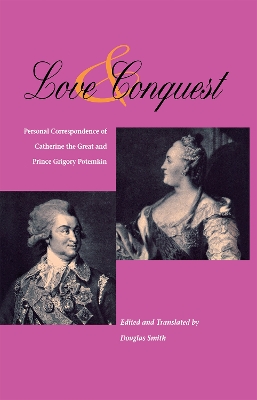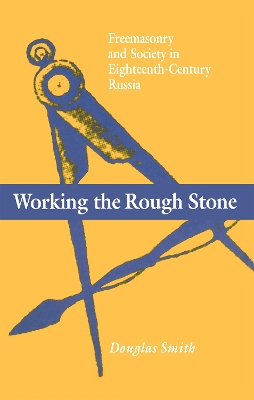NIU Series in Slavic, East European, and Eurasian Studies
2 total works
Of all of history's great romances, few can compare with that of Catherine the Great and Prince Grigory Potemkin. Their turbulent and complicated relationship shocked their contemporaries and continues to intrigue observers of Russia centuries later. Lovers, companions, and, most likely, husband and wife, Catherine and Potemkin were also close political partners, and for a time Potemkin served as Catherine's de facto co-ruler of the Russian Empire. Their letters offer an intimate glimpse into the lovers' unguarded moments, revealing both ecstatic expressions of love and candid insights on eighteenth-century politics.
In February 1774, the Russian empress took Grigory Potemkin for her lover and, it is now believed, secretly married him a few months later. Particularly in the first two years of their relationship, Catherine was consumed by her passion for Potemkin. The hundreds of letters and notes she dashed off to him between assignations in the Winter Palace during this time attest to the giddy exuberance of the new love that so fully embraced her. Love and Conquest contains the most historically significant and personally revealing of these letters, only a few of which have ever before been translated into English.
Beginning with Potemkin's letter to Catherine written while off fighting the Turks in 1769 and concluding with his farewell note scribbled the day before his death in 1791, the correspondence spans most of Catherine's reign. The letters are at once personal and political, private and public. Many of Catherine's love letters to Potemkin written during their stormy affair reveal the empress' passionate personality. Potemkin's letters provide rare insight into his arrogant and mercurial character, while serving to dispel the myth of Potemkin as little more than a corrupt sycophant.
Love and Conquest reveals the complexity of Catherine and Potemkin's personal relationship in light of dramatic changes in matters of state, foreign relations, and military engagements. After their love cooled, Catherine and Potemkin continued to discuss and debate a wide range of state affairs in their letters, including the annexation of the Crimea, court politics, wars against the Ottoman Empire and Sweden, and the colonization of southern Russia. Together they carried out the most dramatic territorial expansion in the history of imperial Russia, transforming Catherine into a powerful world leader and creating a bond of affection that would never fully fade. Readers will find in the letters new insights on Russia's most famous empress, her passions, and her world.
Using a wealth of archival sources previously unavailable to scholars, Smith examines the forces that attracted many social and intellectual leaders of eighteenth-century Russia to Freemasonry as an instrument for change and progress. By "working the rough stone" of their inner thoughts and feelings, such men sought to become champions of moral enlightenment and to create a vision of social action that could bring about change without challenging the social and political precepts on which Russia's stability depended.
By challenging a number of long-held notions about Russian society, Smith broadens our understanding of the complex history of eighteenth-century Russia. Engagingly written and richly illustrated with rare engravings of Masonic life and ritual, this volume will appeal to readers interested in Russia, Europe, the Enlightenment, and the history of Freemasonry.

